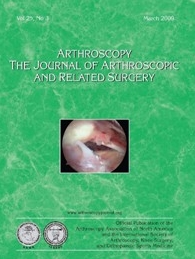
Shoulder & Elbow
Rotator Cuff Repair: Double-row versus single-row appproach
This report has been verified
by one or more authors of the
original publication.
Arthroscopy. 2014 Sep;30(9):1156-1165.
This systematic review examined 8 meta-analyses (4 including Level I evidence and 4 including both Level I and Level II evidence) to determine whether double-row (DR) or single-row (SR) rotator cuff repair (RCR) resulted in superior clinical and structural healing outcomes. The findings of this systematic review of overlapping meta-analyses revealed that the double-row approach results in higher rates of structural healing than the single-row technique, however further research is required to determine whether the advantages associated with the double-row technique is substantial enough to account for the increased cost and operation time required.
Unlock the full article
Get unlimited access to OrthoEvidence with a free trial
Start TrialCritical appraisals of the latest, high-impact randomized controlled trials and systematic reviews in orthopaedics
Access to OrthoEvidence podcast content, including collaborations with the Journal of Bone and Joint Surgery, interviews with internationally recognized surgeons, and roundtable discussions on orthopaedic news and topics
Subscription to The Pulse, a twice-weekly evidence-based newsletter designed to help you make better clinical decisions
Exclusive access to original content articles, including in-house systematic reviews, and articles on health research methods and hot orthopaedic topics
Or continue reading this full article
Register Now

Subscribe to "The Pulse"
Evidence-Based Orthopaedics direct to your inbox.





































